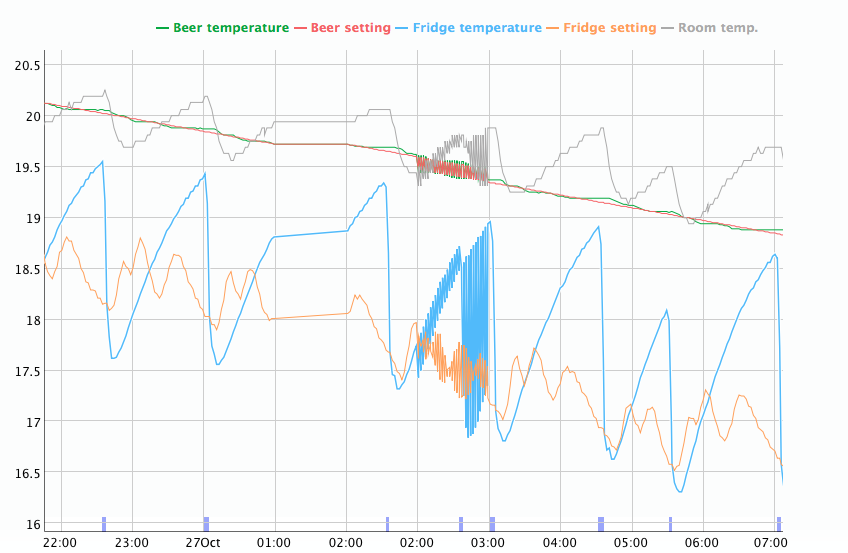Tim Malstrom reported this behavior on the forum:

Quote:
"@eLco Ah, now I know what caused it! When looking in the CSV file, I saw that this particular hour had a list of data points logged twice (after 02:59, it started all over again at 02:00). Looking back in my calendar made me realize that the raspberry Pi clock had been set back automatically due to Daylight saving time in Sweden at that exact time. Odd one!"